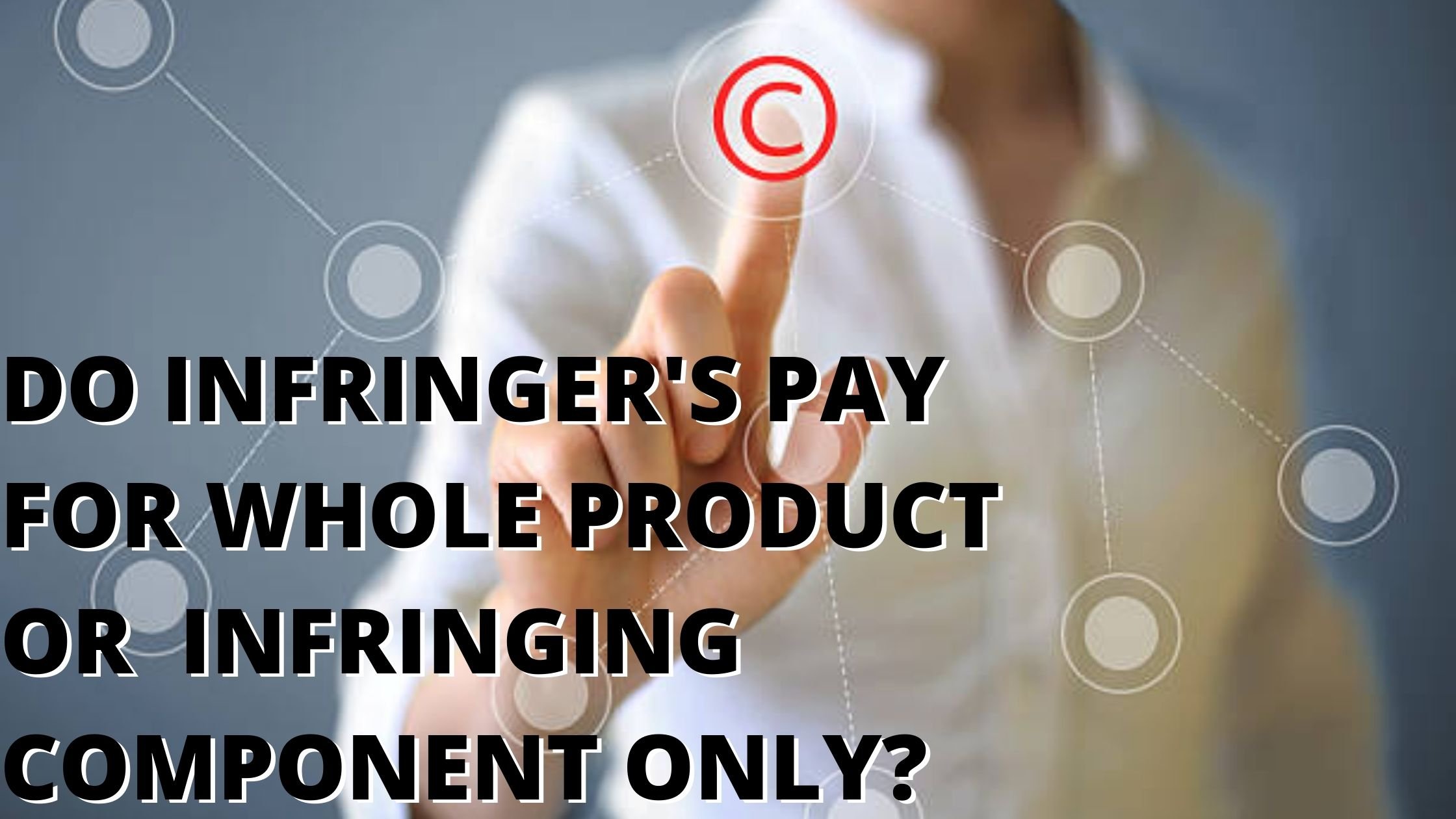DO INFRINGERS PAY FOR THE WHOLE PRODUCT OR THE INFRINGING COMPONENT ONLY?
IPR rights refer to the rights of the person’s or company’s original work patented for a period of 20 years from the date of application for commercial motives. Work in this context means the "operation" of an established product. Work refers to the act of making a product, using a product, handing over a product to another group, or giving a product to import or distribute, etc. The process by which a product is made, work refers to the act of using such a process.

DO INFRINGERS PAY FOR THE WHOLE PRODUCT OR THE INFRINGING COMPONENT ONLY?
INTRODUCTION
IPR rights refer to the rights of the person’s or company’s original work patented for a period of 20 years from the date of application for commercial motives. Work in this context means the "operation" of an established product. Work refers to the act of making a product, using a product, handing over a product to another group, or giving a product to import or distribute, etc. The process by which a product is made, work refers to the act of using such a process. For example, in relation to a production process, work means the process of implementing a process, assigning the process to another party or assigning an import or rendering process, etc. a product made process. If a third party "operates" a patented invention for commercial purposes, and a third party who does not have a right to do so by the copyright holder, such "operation" means a copyright infringement. Actions that interfere with the copyright process and acts of demolition do not infringe copyright infringement. However, such actions are considered to be in violation of other laws under the Civil Code.
Strategies to determine intellectual property violations include:
Fictitious entry, such as:
-
False dictionary installation. For e.g. - Esquivalience is included in the New Oxford American Dictionary (NOAD)
-
Trap Street, a fictional street mapped for the aim of "trapping" the would-be IPR offender of the map
-
Doing watermarking- Designing a patent in some cases can be a way to avoid breaking the law.
There are many companies or individuals that infringe on patents that produce counterfeit or stolen products and services. For example, if a retailer would put a well-known logo on a piece of clothing that the company did not claim. Likewise, an example of a spoiled product is that one could distribute unauthorized DVD copies at his own expense. In such cases, the law has the right to punish the guilty for the offense made. People or companies may seek solutions themselves; however, "criminal sanctions are often enforced to ensure fair punishment and prohibition along with the wrong done”.
CASE LAW
In the year 2011, Apple sued Samsung, among other things, for violating three US. patents. The two were for designs for part of mobile and the other was for the graphical user interface. The judge pronounced that some Samsung smartphones had violated these patents and gave Apple the amount of $ 399 million as damages.
To receive the $ 399 million prize, Apple inserted in section 289 of the Patent Act, which says, anyone who uses a patented design, any color-coded imitation, for any commercial purpose, will be liable to the owner until his or her full profit level. The district court held that for the motive of ascertaining "total profit," the appropriate transcripts of patents used for the design of the patent were all Samsung phones, not just broken parts or telephone components.
Samsung filed a lawsuit, but the Federal Court of Appeals of the US. declared the award, stating that section 289 "clearly recognizes the full benefit of the patent from the issue of copyrighted design" and that Congress dismissed any allocation requirements.
Samsung is therefore seeking a review by the US. Supreme Court, asking the issue as to “When a design of a patent is applied to a component of a product only, can the prize for infringement is limited to those benefits related to that component of the product?
In Samsung v. Apple's, Supreme Court was asked to decide whether to claim damages based on Samsung's full profit for its entire smartphone or simply based on interest found on individual items (such as the screen or phone body) that violated the law.
In a nutshell, Samsung noted that a “patent article” under total profit law was not the same as every other product sold. It also compared its case with the old analogy used by the US. Court of Appeals. Circuit Two that the owner of the title deed must not be entitled to any profits from the whole book.
Consequently, in 2016 with the unanimous decision of Judge Soto mayor, the Supreme Court altered the Federal Court. The Court held that the law permits for damages to be based at the level of components because components are also articles of manufacture.
The Court further stated that the phrase article of manufacture is big enough to include both a product sold to a customer and part of that product, whether sold separately or not. Therefore, referring to the article of manufacture to cover only the final product sold to the consumer gives very little meaning to this statement. "
While the ruling may have given relief to Samsung and others have been found to have infringed the copyright, it gave a very limited clarity about the law itself, and left that to the courts to find out what the word "article of manufacture” - every product, or only part of the infringement – applies to any specific case.
After being filed by the Federal Circuit, Samsung's case found itself back in the United States Regional Court where both Apple and Samsung agreed to compromise their remaining claims and counterclaims.
REFERENCES
-
www.meti.go.jp
-
Michelsonip.com
-
www.finnegan.com
-
www.mondaq.com
BY:-
Shruti Kulshrestha












